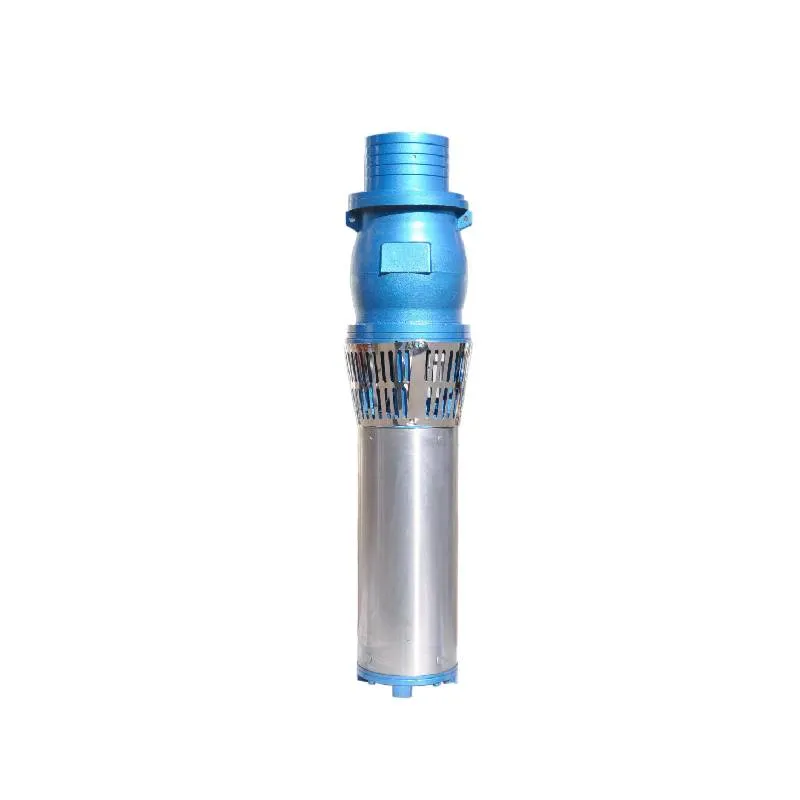డిసెం . 24, 2024 17:34 Back to list
Understanding the Functionality and Uses of Submersible Pumps in Various Applications
Understanding Submersible Pumps What They Are and How They Work
A submersible pump is a type of pump that is specifically designed to be submerged underwater. The primary function of this pump is to remove water from a certain source, transport it to another location, or even to facilitate the transfer of wastewater. Unlike traditional pumps that operate above the water surface, submersible pumps function underwater, making them an efficient solution for various applications.
Design and Components
Submersible pumps typically consist of a sealed motor and a pump body, both of which are designed to operate underwater. The encapsulated design is crucial because it prevents the motor from coming into contact with the liquid being pumped. This is achieved through the use of a hermetically sealed motor housing, which protects the internal components from water and other elements.
The main components of a submersible pump include
1. Motor Generates the necessary power to drive the pump. The motor is often a waterproof electric unit, making it capable of operating underwater. 2. Pump Body This part is responsible for the actual movement of water. It features impellers (or rotors) that create the flow of water.
3. Discharge Head This is where water exits the pump. It directs the water into pipes or hoses leading to the desired location.
4. Cable It connects the motor to the power supply. Just like the motor, this cable must be designed to withstand underwater conditions.
Due to their design, submersible pumps can handle various types of liquids, including clean water, sewage, and even chemical solutions, depending on the materials used in their construction.
How Submersible Pumps Work
Submersible pumps operate by converting rotary energy from the motor into kinetic energy, which then moves the fluid. When the pump is activated, the motor spins the impellers located within the pump body. The spinning impellers create a centrifugal force that pulls water into the pump. Once the water enters the pump, it is forced upward through the discharge head and out into the desired location.
One of the key advantages of submersible pumps is that they can effectively manage the pressure generated by the pumped fluid. As the pump is submerged, the pressure on the fluid increases, allowing the pump to move larger volumes of liquid with relatively less energy compared to surface pumps.
what is a submersible pump

Applications of Submersible Pumps
Submersible pumps are used in a wide range of applications, including
- Water Supply These pumps are often used in residential settings to draw groundwater for irrigation or household use from wells.
- Sewage and Wastewater Management Submersible sewage pumps are essential for municipal sewage systems, removing waste and preventing backups in residential and commercial facilities.
- Construction and Dewatering In construction sites, submersible pumps are used to remove excess groundwater, allowing for safe excavation and building.
- Aquarium and Fountain Systems Submersible pumps are often found in aquariums and fountains to circulate water, ensuring a healthy environment for aquatic life.
- Industrial Processes These pumps are used in various industrial processes for fluid transfer, cooling, and liquid separation.
Advantages of Submersible Pumps
One of the primary benefits of using a submersible pump is its efficiency. Operating underwater reduces the risk of cavitation, which can damage pump components and lead to decreased performance. Additionally, submersible pumps consume less energy, making them a cost-effective choice for many applications.
Moreover, submersible pumps are typically easier to install compared to surface pumps. Since they are designed to be lowered directly into the liquid, there is no need for extensive piping systems that surface pumps might require.
Conclusion
In summary, submersible pumps are a vital component in many industries and applications, from water supply to wastewater management. Their efficient design and ability to handle various substances make them an ideal solution for numerous challenges. As technology advances, the design and functionality of submersible pumps continue to improve, enhancing their performance and reliability in demanding environments. Whether in residential settings or industrial facilities, the role of submersible pumps is indispensable for effective liquid handling.
-
Submersible Water Pump: The Efficient 'Power Pioneer' of the Underwater World
NewsJul.01,2025
-
Submersible Pond Pump: The Hidden Guardian of Water Landscape Ecology
NewsJul.01,2025
-
Stainless Well Pump: A Reliable and Durable Pumping Main Force
NewsJul.01,2025
-
Stainless Steel Submersible Pump: An Efficient and Versatile Tool for Underwater Operations
NewsJul.01,2025
-
Deep Well Submersible Pump: An Efficient 'Sucker' of Groundwater Sources
NewsJul.01,2025
-
Deep Water Well Pump: An Efficient 'Sucker' of Groundwater Sources
NewsJul.01,2025
-
 Submersible Water Pump: The Efficient 'Power Pioneer' of the Underwater WorldIn the field of hydraulic equipment, the Submersible Water Pump has become the core equipment for underwater operations and water resource transportation due to its unique design and excellent performance.Detail
Submersible Water Pump: The Efficient 'Power Pioneer' of the Underwater WorldIn the field of hydraulic equipment, the Submersible Water Pump has become the core equipment for underwater operations and water resource transportation due to its unique design and excellent performance.Detail -
 Submersible Pond Pump: The Hidden Guardian of Water Landscape EcologyIn courtyard landscapes, ecological ponds, and even small-scale water conservancy projects, there is a silent yet indispensable equipment - the Submersible Pond Pump.Detail
Submersible Pond Pump: The Hidden Guardian of Water Landscape EcologyIn courtyard landscapes, ecological ponds, and even small-scale water conservancy projects, there is a silent yet indispensable equipment - the Submersible Pond Pump.Detail -
 Stainless Well Pump: A Reliable and Durable Pumping Main ForceIn the field of water resource transportation, Stainless Well Pump has become the core equipment for various pumping scenarios with its excellent performance and reliable quality.Detail
Stainless Well Pump: A Reliable and Durable Pumping Main ForceIn the field of water resource transportation, Stainless Well Pump has become the core equipment for various pumping scenarios with its excellent performance and reliable quality.Detail
